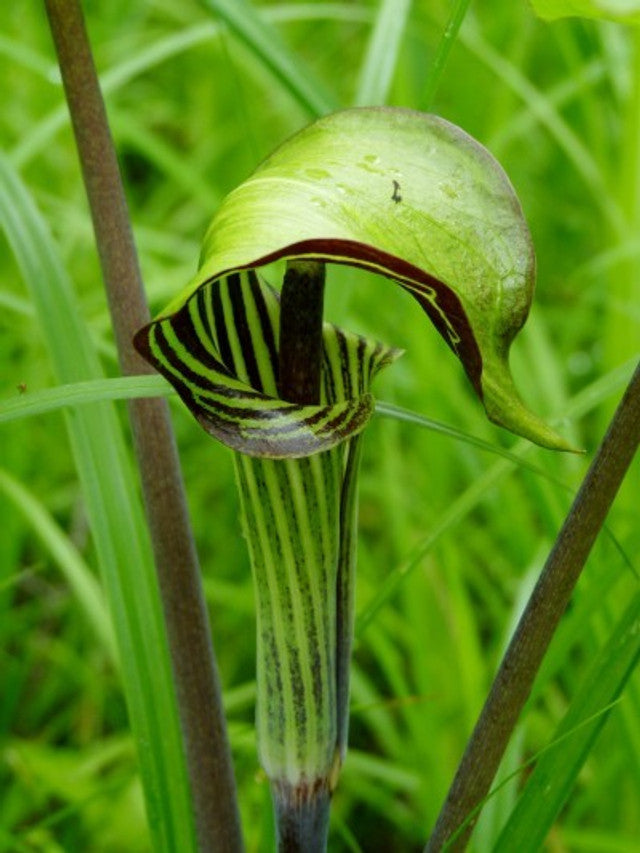
Jack in the Pulpit
Jack-in-the-Pulpit (Arisaema triphyllum) is a top-notch native wildflower to grow in your shade garden. It is a small perennial native to eastern North America, with a large, uniquely shaped flower that makes a bold and showy statement in any moist, shady spot. Native plant enthusiasts and gardeners are drawn to this wildflower for its woodland mystique and its remarkable flower that attracts flies and gnats with its interesting shape and scent.
Jack-in-the-pulpit plants are naturally found in woodlands, but they are also perfect additions to naturalized gardens, shade borders, or woodland plantings. They have large, bright, fresh, and chartreuse green leaves divided into three leaflets each and are host plants for swallowtail butterflies. Their tall flower stalks rise up above the leaf litter in spring, creating a hooded “pulpit” at the top that covers an erect central column called the “Jack.” The pulpit is green with green-striped or purple stripes or, in one variety, deep maroon, which makes for a dramatic addition to shady spots. The flowers are hermaphroditic and have an intriguing shape, which, along with the smell, attracts early-season pollinators such as flies and gnats.
The flower structure and coloring also make a real statement in a shade garden. Individual flower stalks have one or two sets of the three-part leaves, emerging fresh and springy in the spring and remaining bright and perky throughout the summer. The hooded “pulpit” of the flower hides the “Jack” at the center of the flower, and both structures open up to create a fuzzy club that connects to a cluster of berries in the fall. In the late summer to early fall, the flowers are replaced by a cluster of bright red and shiny berries.
Planting instructions
Jack-in-the-pulpit plants like partial to full shade, rich, humusy, and moist but well-draining soil, and a layer of woodland-style mulch (leaf litter). Water regularly when first establishing, but once they are established, they are very low maintenance and will return for many years, slowly creating a small colony. The plant will alternate between male and female from year to year, depending on the age of the plant. Smaller and younger plants are more likely to be male, and larger, well-established plants can change to female flowers the following year to ensure healthy pollination within the colonies.




